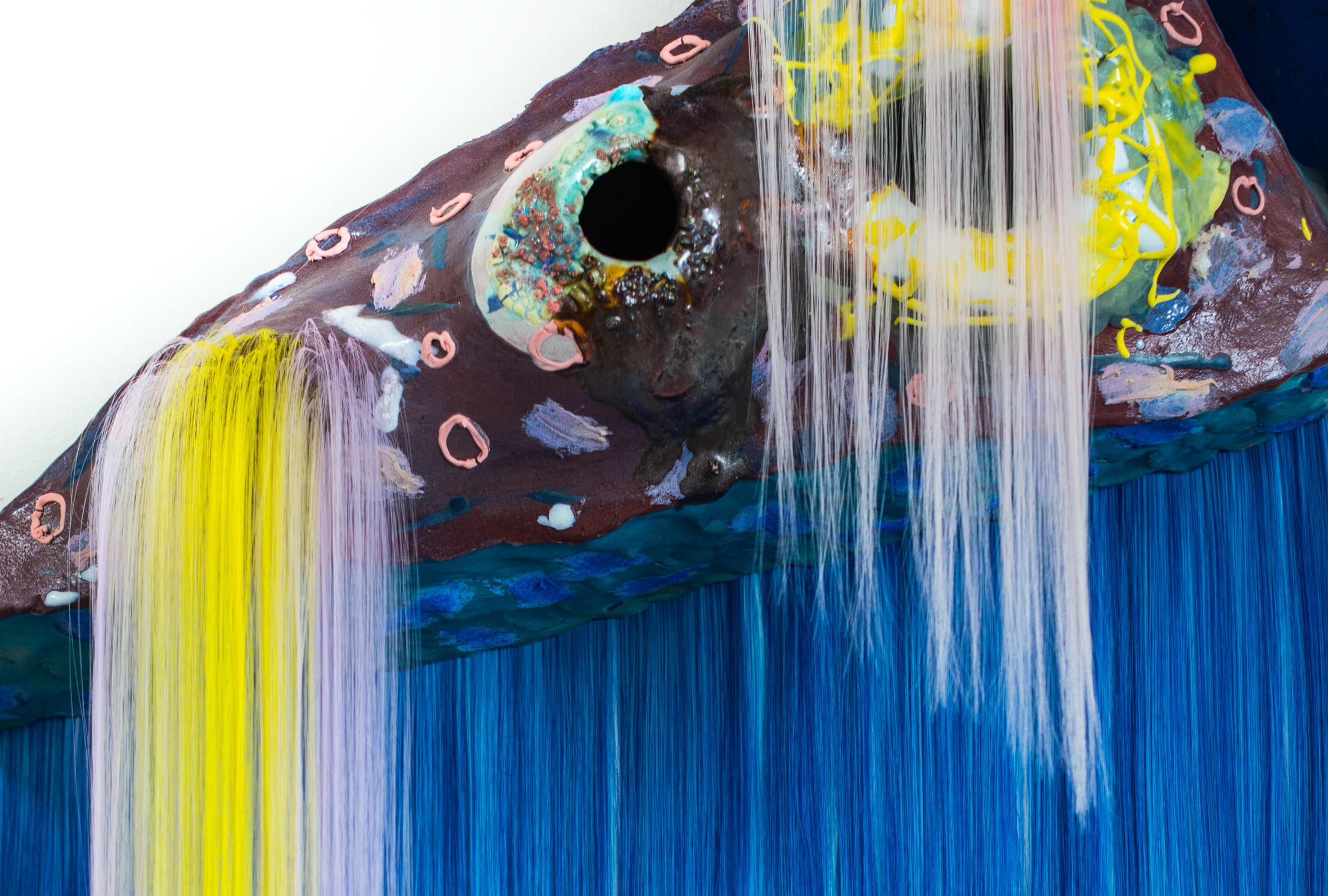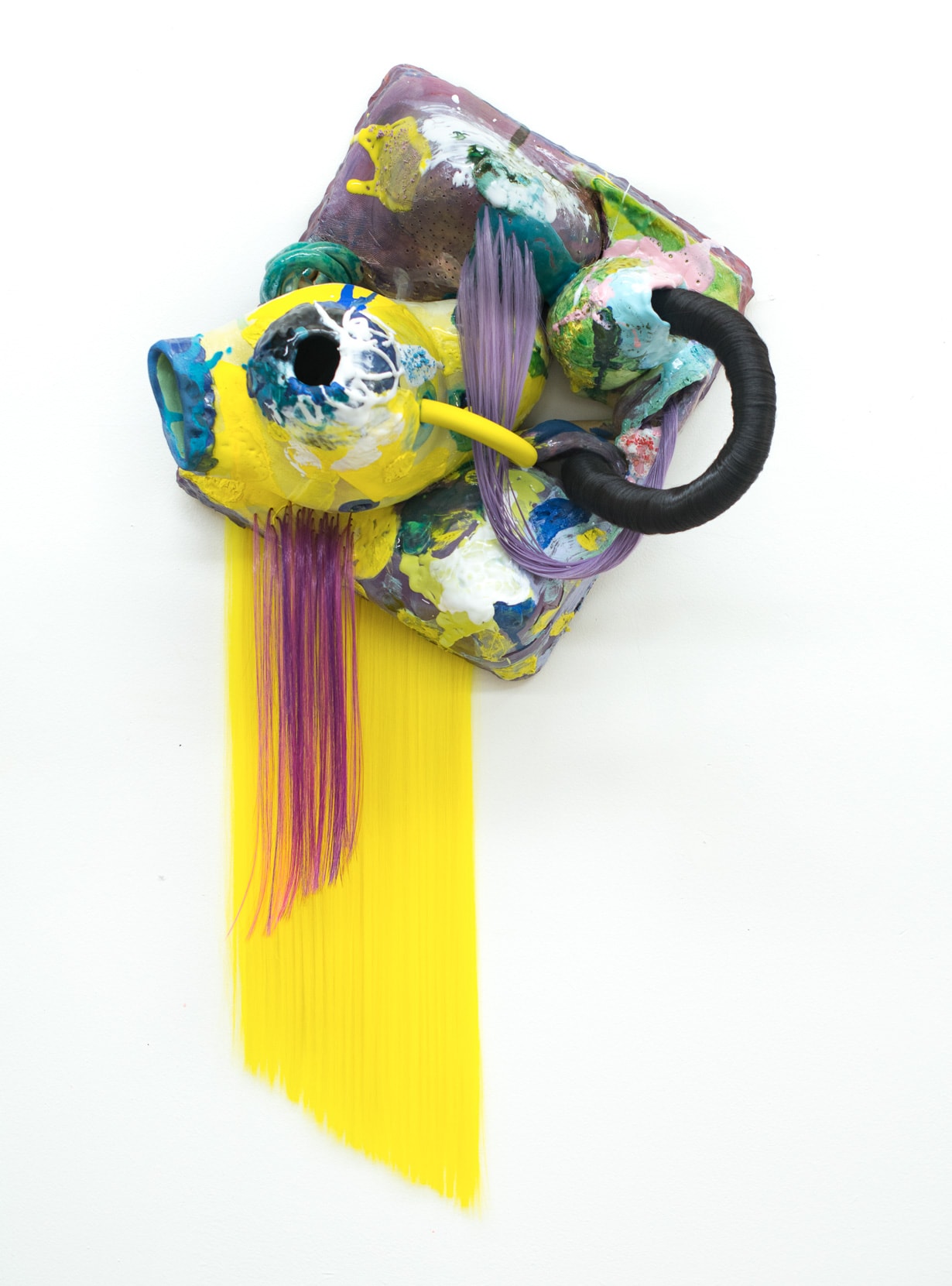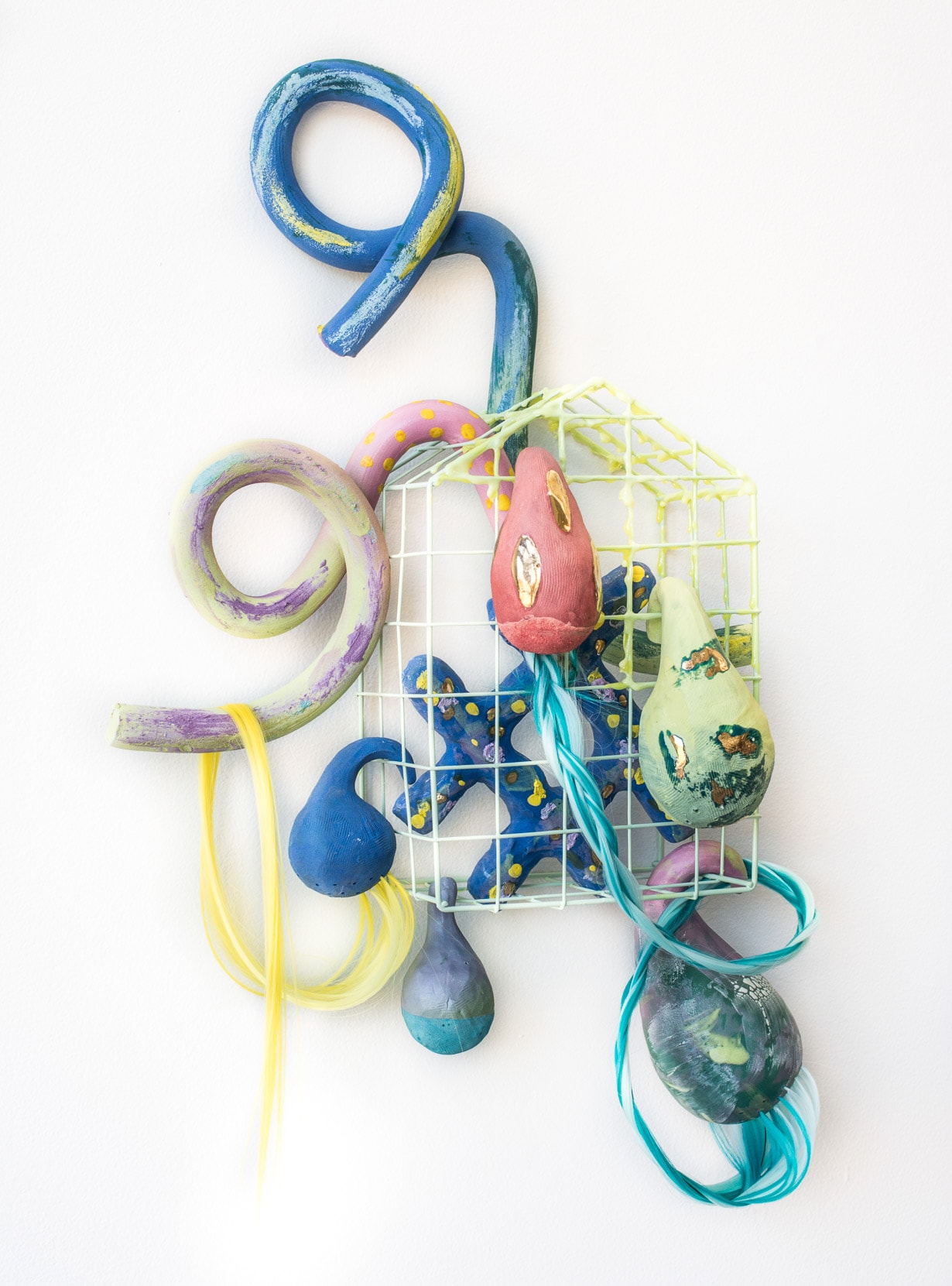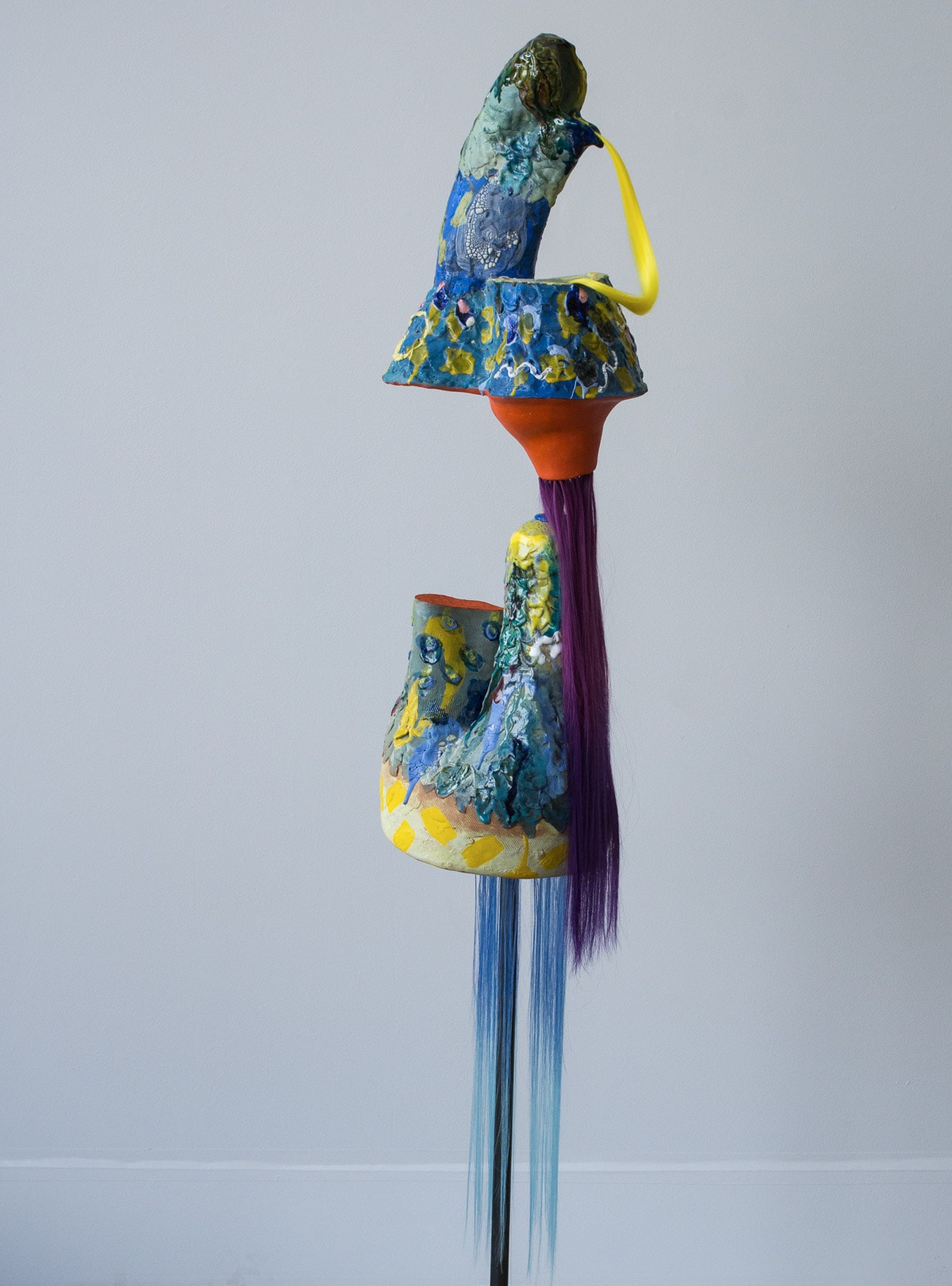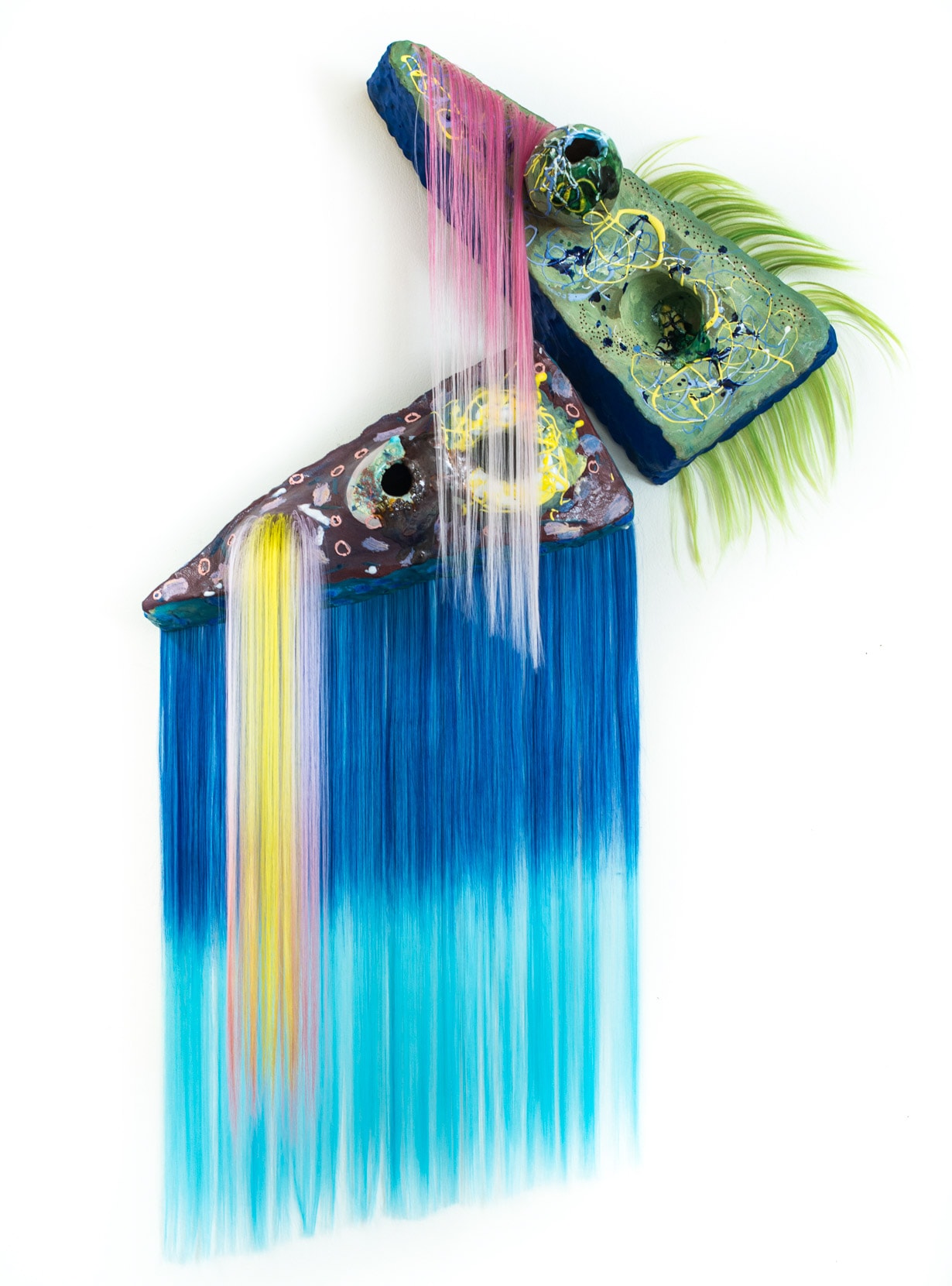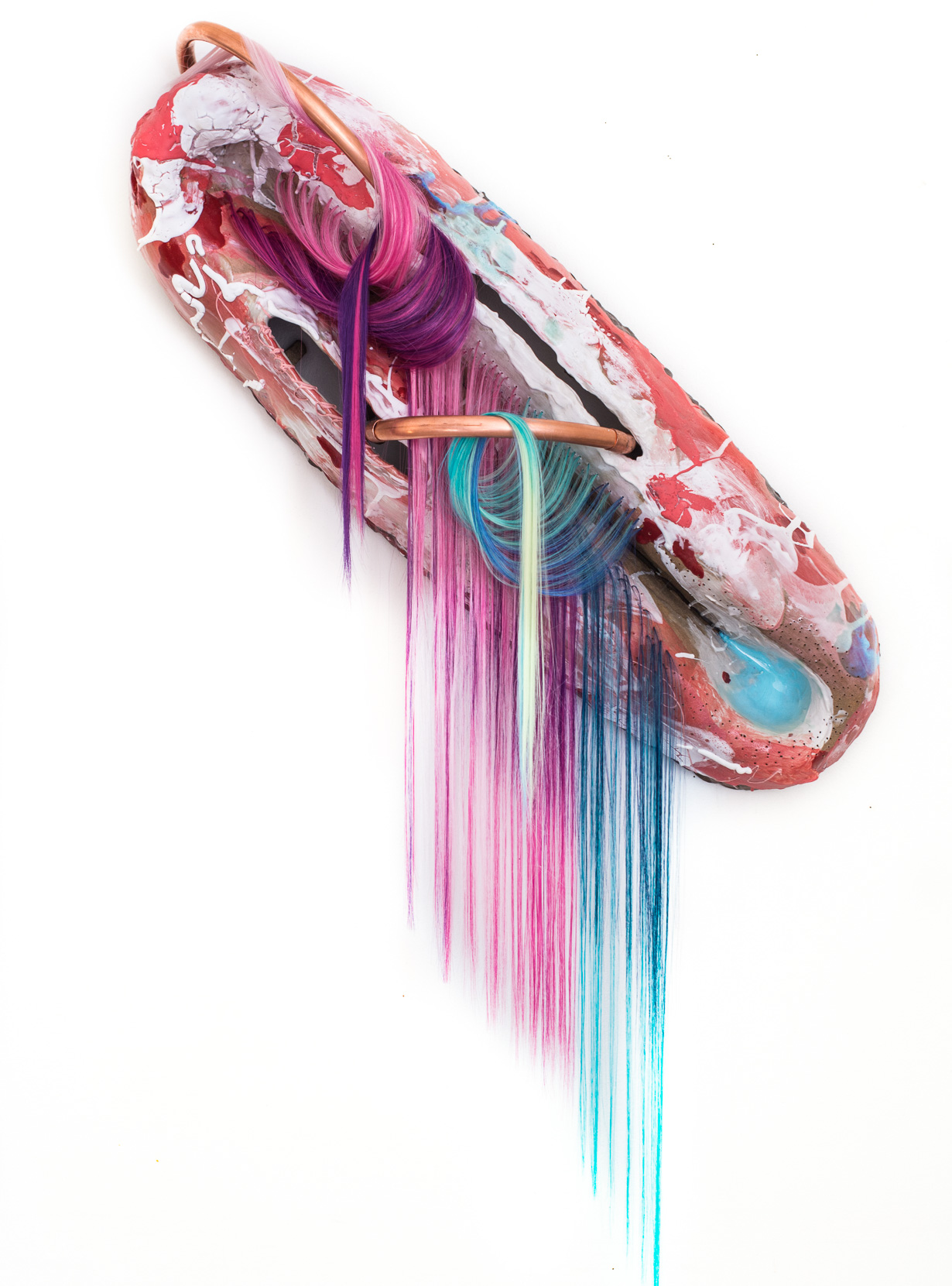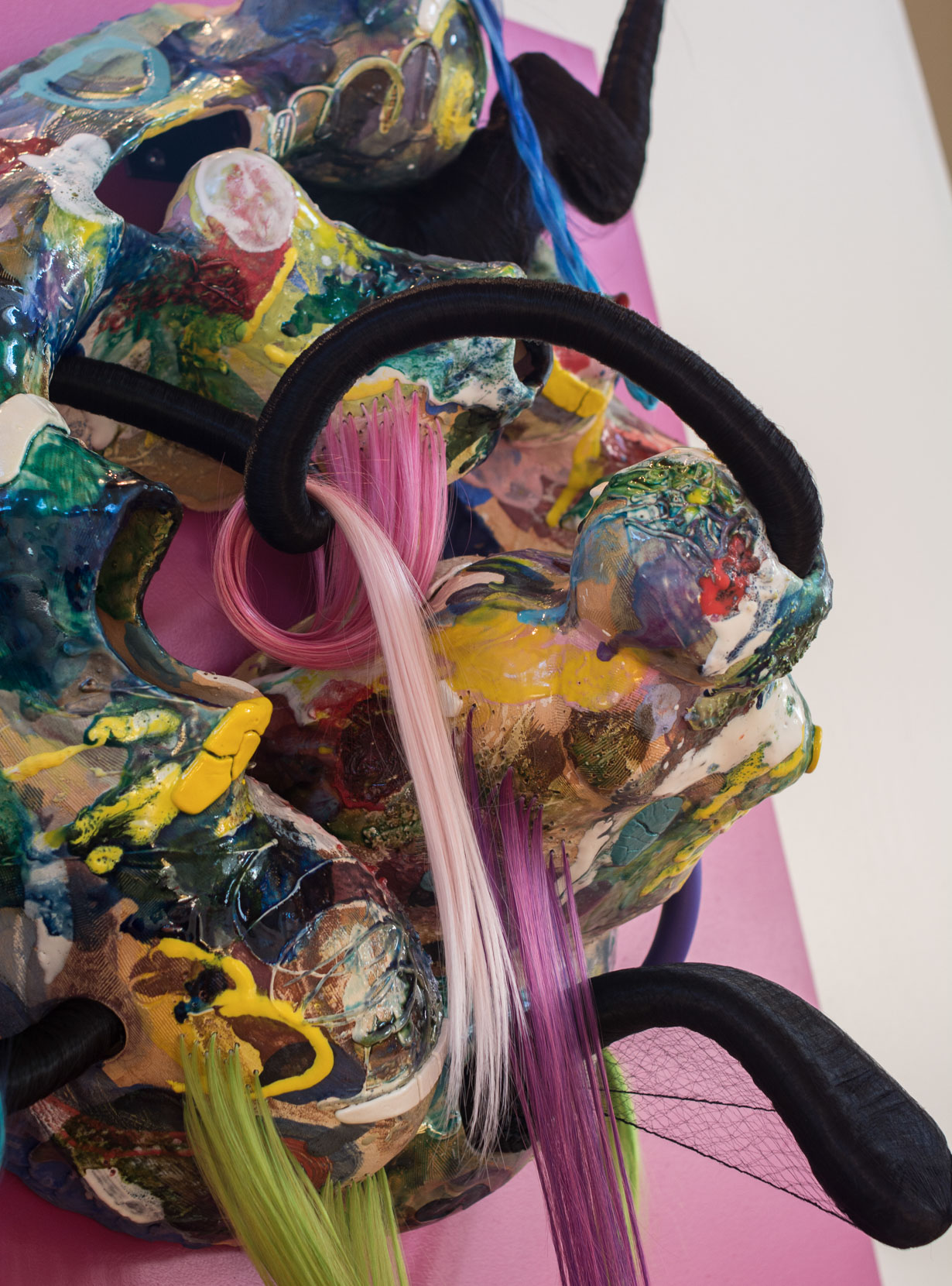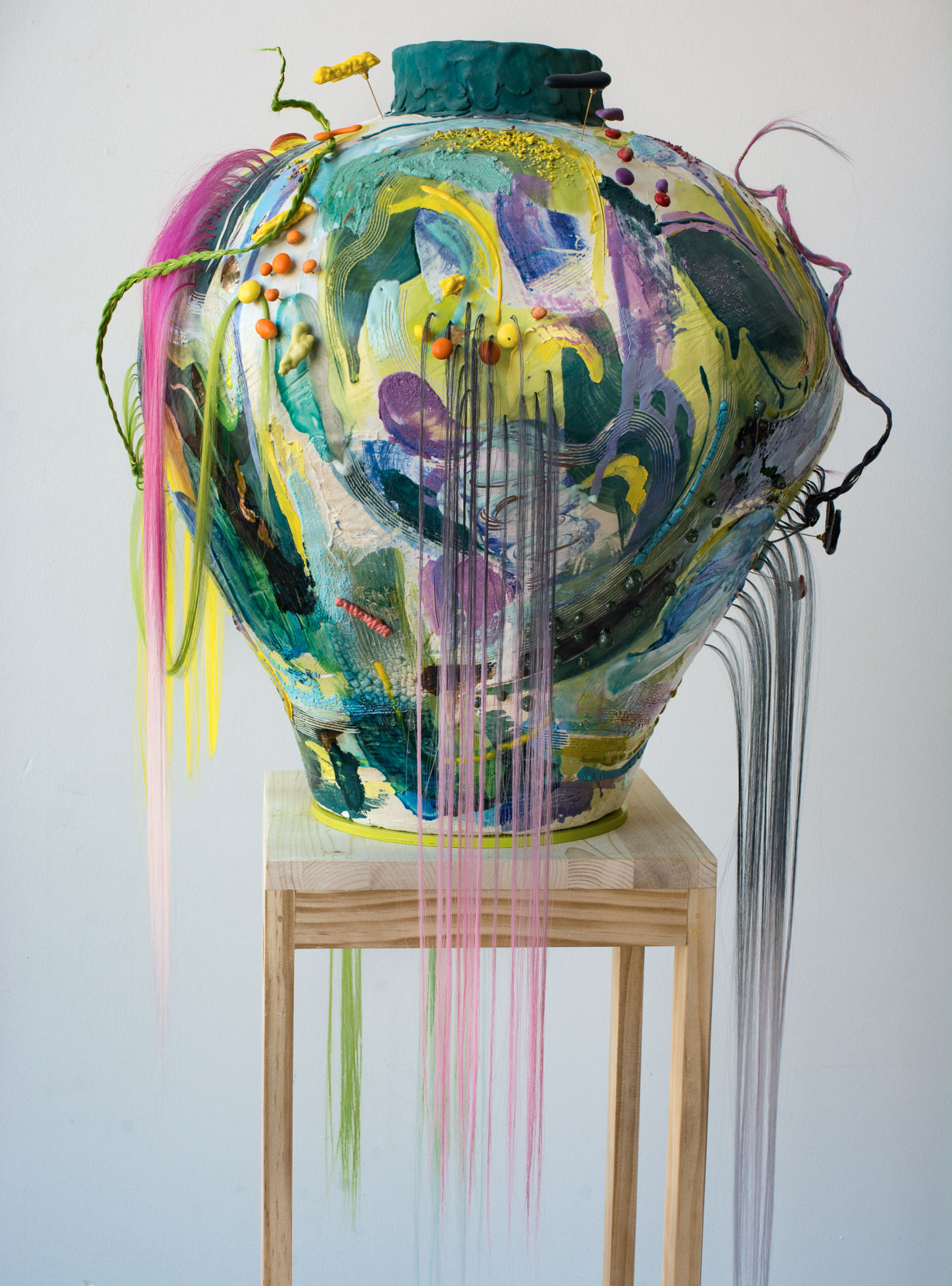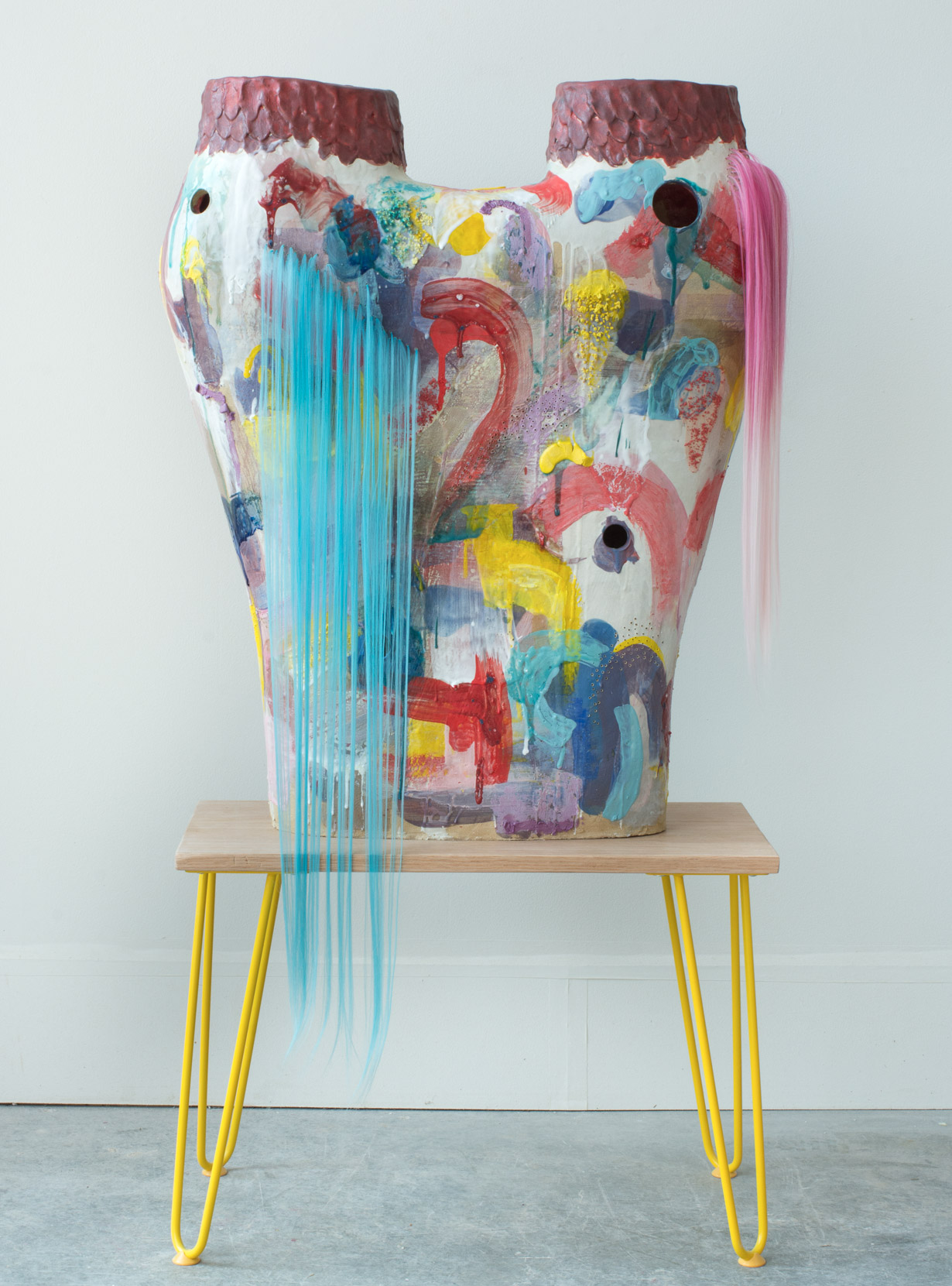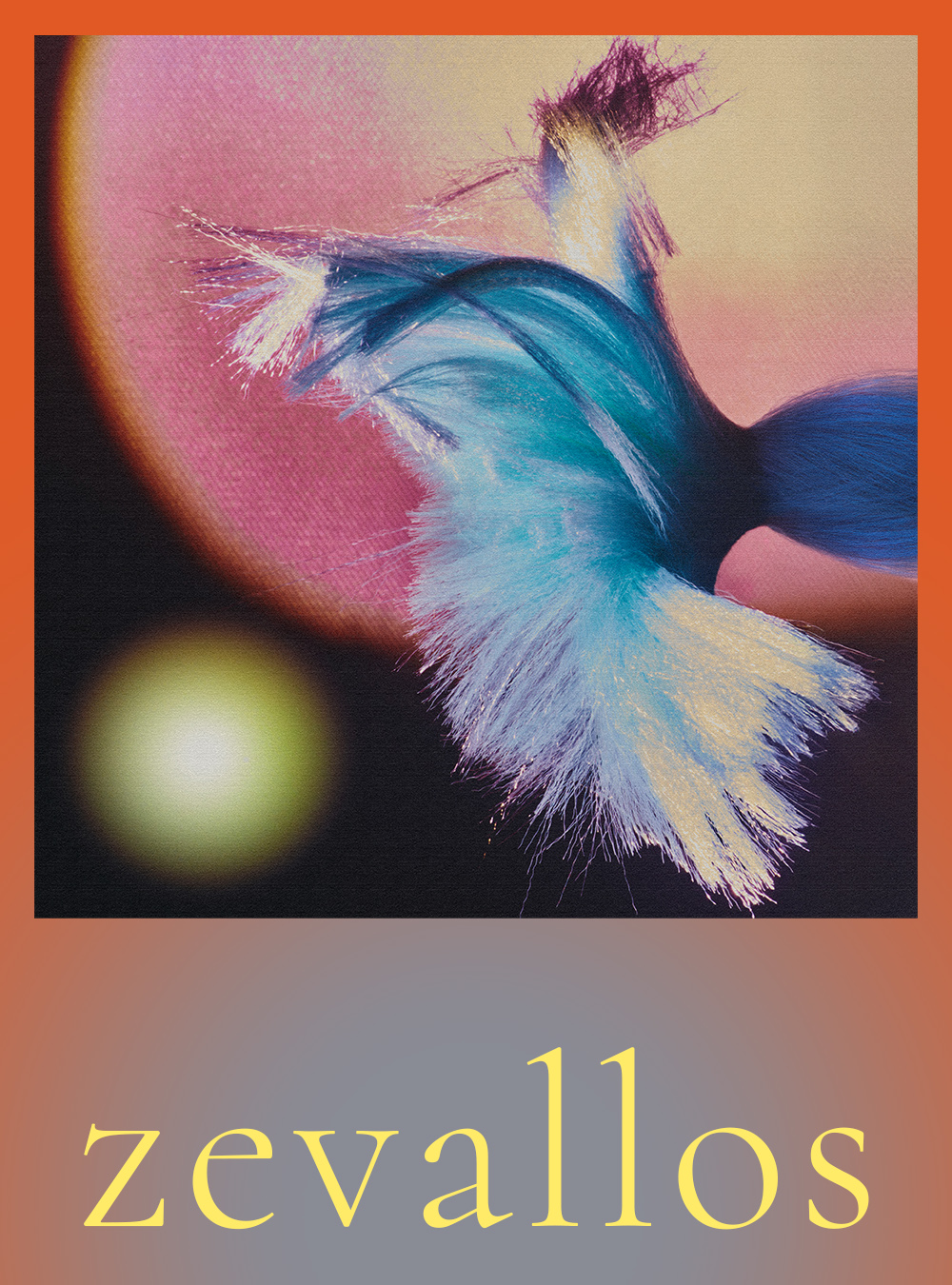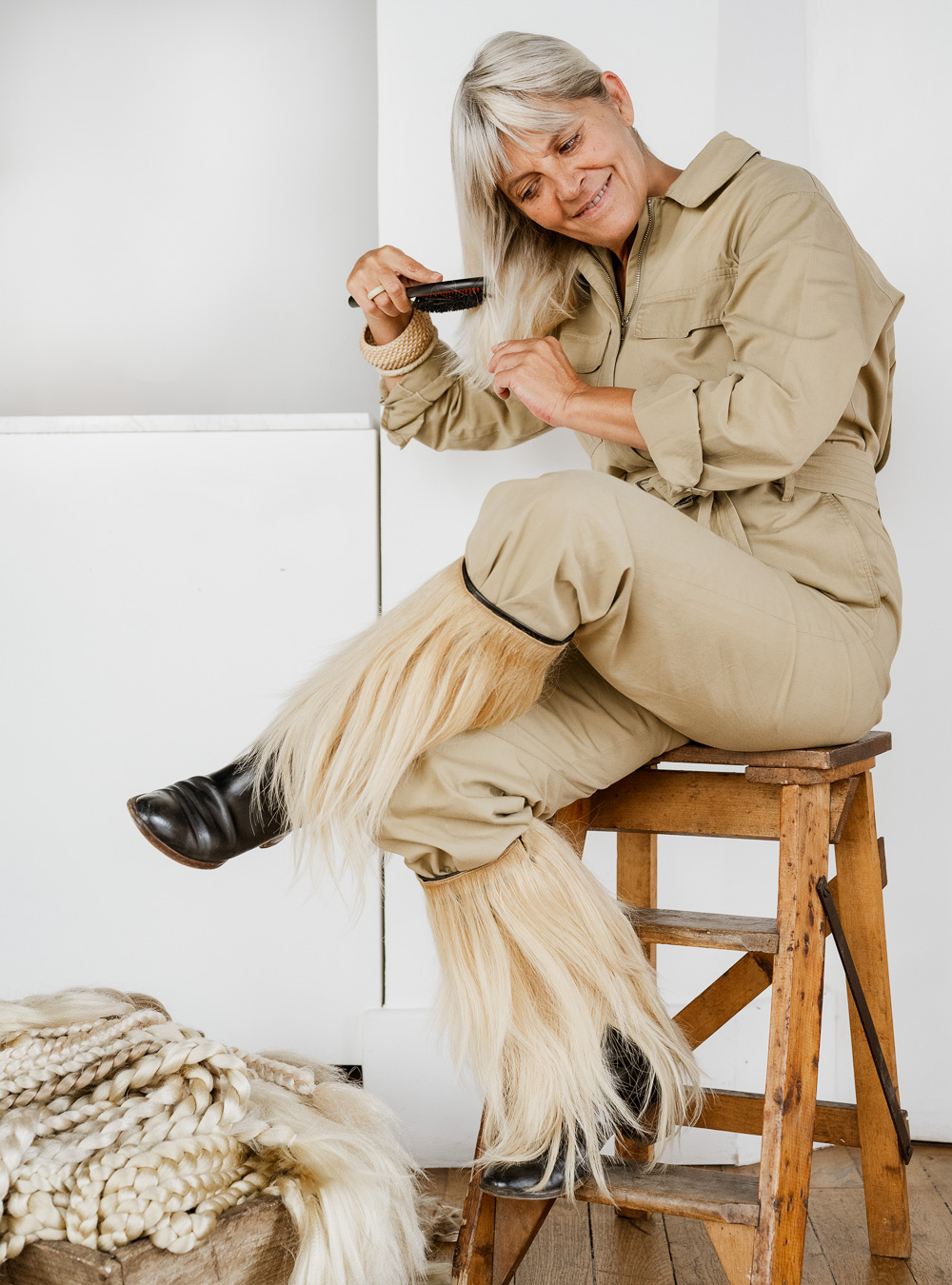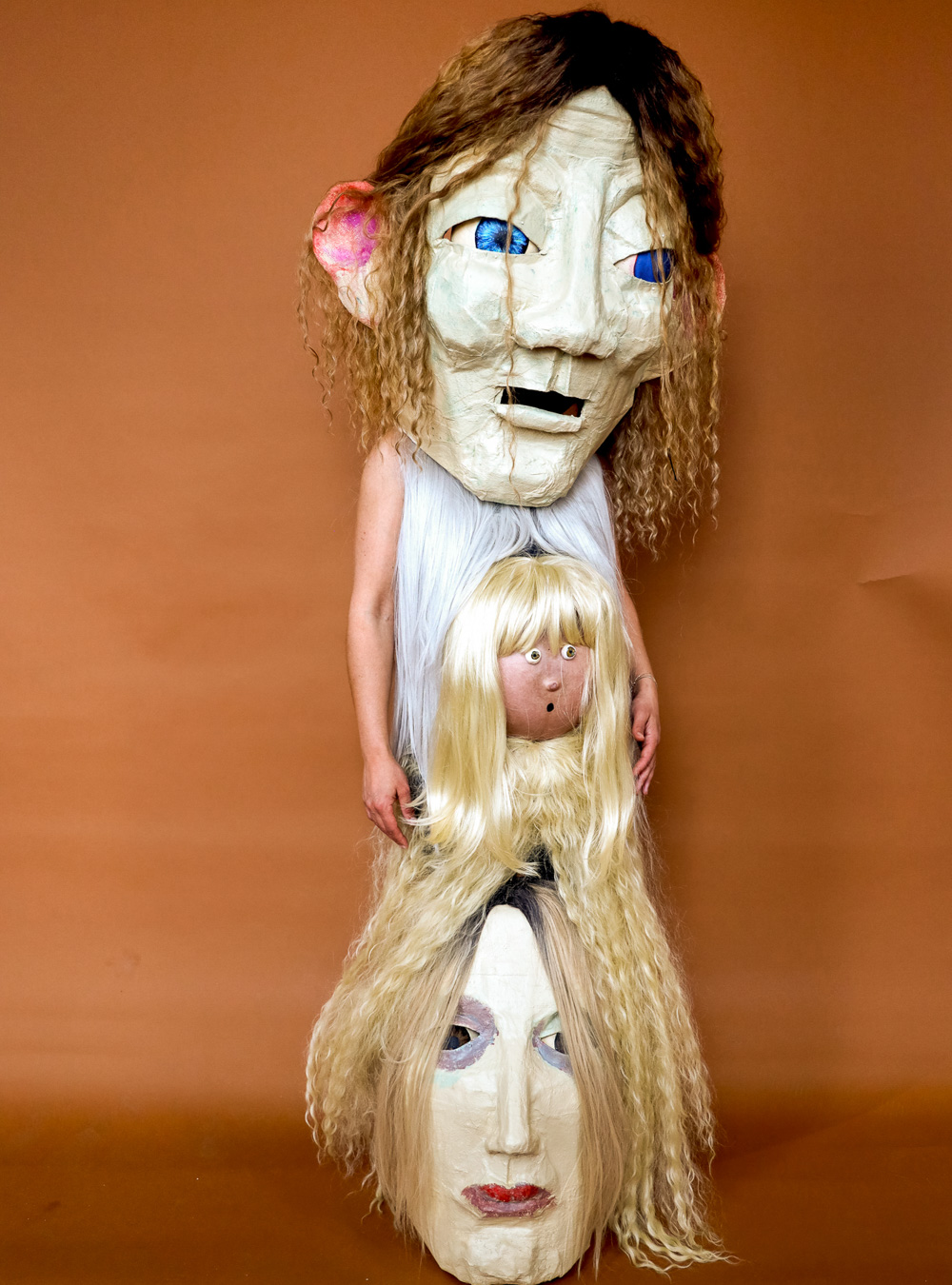ART + CULTURE: Specialising in playful small scale sculptures, artist Ling Chun uses synthetic hair to bring her ceramic forms to life
Artwork + Images: Ling Chun
Interview: Emma de Clercq
Describing her ceramic forms as “playgrounds for the glaze”, Ling Chun combines hair and clay in playful, unexpected ways. The Seattle based artist adopts a distinctly ‘more is more’ approach to her craft, creating unique handmade sculptures bursting with colour and texture.
“The haptic quality of hair offers a sense of caring and lightness into my work, it balances the permanence of ceramics”
The resulting pieces are so full of life that they seem to resemble creatures rather than objects, charmingly lopsided misfits and oddities with whimsical names such as Three Musketeers and Fanta Fountain.
While the combination of hair and clay is perhaps not an obvious or expected union, the silky and flowing synthetic hair favoured by Chun seems to balance the solidity of her heavy ceramic forms, instilling the sculptures with a lightness and tactility. The inclusion of hair also serves as a nod to Chun’s (brief) stint at beauty school: “the use of hair in my work becomes a perfect marriage of my background as a beauty school dropout and my current obsession with colour glaze chemistry”, she explains.
Through her work, Chun says that she hopes to challenge the role of ceramics by disassociating the material from its stereotypical or culturally accepted uses. The very process of creating the pieces goes against the format used for crafting functional ceramics: removing her still-hot sculptures from the kiln, Chun applies liquid glazes to the surface, creating a sizzling sound and a haze of steam until the glaze sticks. It’s an intuitive process that emerges through multiple firings and layers of glaze. The work is born of the spontaneous dripping, sliding, running, climbing and crawling that occurs. We spoke to Chun about her creative process, craft versus fine art, and why hair and clay are a match made in heaven.
How would you sum up your work in a sentence? My lust and greed for colour, my untranslatable language, my cultural bridges, my playground for the glaze and my over-the-top, ostentatious alter-ego.
What are some of the themes you explore within your practice? The history of hair, the invention of language, the interaction of colour, and the chemistry of glaze.
What inspired you to start using hair as one of your core materials? I was a beauty school dropout! That part of me has always been there, and eventually worked her way out into my ceramic sculptures. One day, while I was in the bathroom, I found myself having a repulsed response to my own hair down in the drain. I was inspired by my own ambivalent reaction to hair; while I spent hour after hour on haircare, only a few seconds after it falls from my body, I’m immediately repulsed by it. It was then that I began to look into the versatility of hair as a potential material. I’m also a colour enthusiast, so with the full range of choice of hair dye and colour wigs, the use of hair in my work becomes a perfect marriage of my background as a beauty school dropout and my current obsession with colour glaze chemistry.
What does hair as material offer your work that other materials don’t? The haptic quality of hair offers a sense of caring and lightness into my work, it balances the permanence of ceramics.
With its connotations of functionality, pottery has previously been perceived as firmly inhabiting the world of craft as opposed to the world of fine art. However, ceramic artists are challenging these perceptions with increasingly boundary-blurring works. What’s your opinion on this? In less than a decade, the contemporary ceramic art scene has shifted. Although there is tension between what’s viewed as ‘craft’ or ‘fine art’, we need to embrace the concept of the liminal, showing how traditional practices and new conceptual approaches interact. I think craft and fine art exist horizontally, one informing the other.
With my work, I want to share my perspective of what ceramics can do and encourage new ways of thinking about ceramics as fine art, with respect for and understanding of its nature as craft.
- ANTHROPOLOGY OF HAIR
- ANTHROPOLOGY OF HAIR
- ANTHROPOLOGY OF HAIR
- ANTHROPOLOGY OF HAIR
- ANTHROPOLOGY OF HAIR
